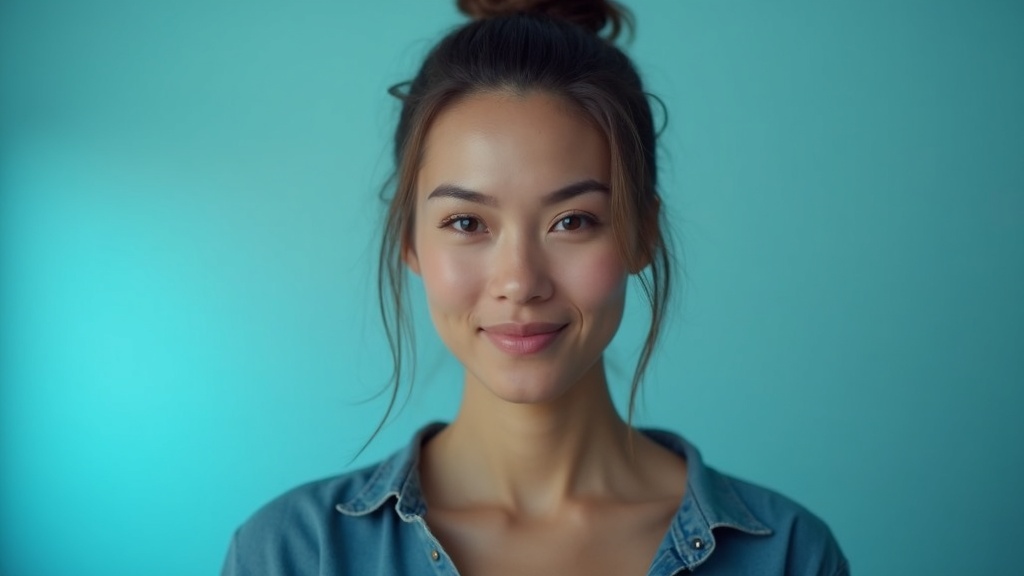How AI Portraits Boost Landing Page Conversions and Ad Performance

This image was created in the BlendMe.ai app.
First impressions on a landing page or an ad are almost entirely visual. If your hero image or ad creative feels generic or inconsistent with your copy, you'll lose attention—and conversions—within seconds. That’s why modern teams are turning to AI portrait tools like BlendMe.ai to create consistent, on-brand imagery fast: from high-resolution headshots for hero sections to animated micro-videos for social ads.
In this article you'll get practical, testable tactics for using AI portraits and image-to-video to increase trust, lift click-through rates, and keep creative refresh cycles short. We'll focus on conversion-oriented use cases and A/B testing tips you can apply today.
Why portraits matter for conversions
Visuals signal credibility before any text is read. On landing pages and ads, a strong, relevant face can:
- Build immediate trust—people respond to faces and eye contact.
- Improve message alignment—use styling to match product tone (corporate, friendly, creative).
- Reduce cognitive friction—consistent imagery makes pages feel polished and professional.
Marketing tests consistently show that personalized imagery—realistic portraits, brand-consistent styling, thumbnails with human faces—tends to outperform abstract visuals for trust and click intent. The challenge: getting high-quality, on-brand photos at scale without repeated photoshoots.
What AI portraits bring to the conversion toolbox
BlendMe.ai’s AI portrait generation and editing features solve common bottlenecks:
- AI Portrait Generation: Train a personalized model from a handful of photos and produce unlimited, high-resolution portraits that match your brand tone (formal, casual, creative). Faster than scheduling shoots; repeatable for campaigns.
- Smart Editing: Quickly retouch, change outfits, or swap backgrounds so imagery aligns with landing page layouts and ad specs.
- Image-to-Video: Turn still portraits into short micro-videos—subtle head turns, breathing motion, or short intros—that increase engagement in hero sections and social ads.
Mini-scenario: a coaching startup needs multiple hero images—one for the homepage, another for the pricing page, and square thumbnails for social ads. Instead of booking three shoots, they create one personalized model on BlendMe.ai, generate variations in seconds, and A/B test which tone performs best.
Use cases and quick wins
- Hero section trust test: Swap an abstract hero with a portrait styled in the product’s color palette. Measure bounce rate and CTA clicks.
- Founder spotlight ads: Use a professionally styled AI portrait for paid ad creatives. Pair with a short micro-video for story-format placements to test CTR lift.
- Social creative refresh: Generate seasonal or topical portrait variants (casual vs. formal) to prevent ad fatigue without added shoot costs.
- Team pages at scale: Create cohesive, print-ready headshots for sales and marketing materials without coordinating multiple photographers.
Practical A/B testing checklist (conversion-focused)
- Baseline: Run your current hero or ad creative for a week and record CTR, bounce rate, and conversion rate.
- Variant A: Replace the hero image with a single AI-generated portrait aligned to brand tone.
- Variant B: Use the same portrait but as a short autoplay micro-video (3–6 seconds) in the hero.
- Keep copy and CTA identical. Test duration: until you reach statistical significance (or for at least 1,000 impressions).
- Measure micro-conversions (time on page, CTA hover) in addition to final conversions.
Key metrics to watch: CTR on ads, bounce rate on landing pages, micro-conversion signals (video plays, CTA interactions), and cost per acquisition.
Tip: Use neutral backgrounds and consistent lighting in hero images to reduce visual friction—AI editing makes it easy to standardize these elements across variants.
Creative guidelines for conversion-optimized portraits
- Match the gaze: For trust and approachability, use portraits with a natural, slight smile and direct-but-relaxed eye contact.
- Align outfit and color: Sync outfit colors with brand accents to create visual harmony and emphasize CTAs.
- Thumbnail-first thinking: For ads, crop to a face-focused thumbnail that remains legible on mobile.
- Keep motion subtle: For image-to-video, micro-movements (breathing, eye blink, tiny head turn) perform better than overt gestures which can distract.
Objections & privacy considerations
Some teams worry about authenticity when using AI portraits. BlendMe.ai addresses this by training a model on the user’s own photos, preserving likeness and allowing natural results. Also, secure processing and clear privacy controls reduce risk when using generated imagery in external-facing assets.
Short FAQ
Q: Will AI portraits look fake in a hero?
A: Not if you prioritize natural poses, consistent lighting, and small retouching. Use BlendMe.ai’s editing tools to fine-tune realism.
Q: Should I always use a still or a micro-video?
A: Test both. Micro-videos can lift engagement, but stills may convert better where page load speed is critical.
Q: Can I create team imagery that feels cohesive?
A: Yes—train individual models and apply consistent styling and backgrounds for a unified look.
Final note: make creative velocity a competitive advantage
High-performing landing pages and ad campaigns require steady creative refreshes. AI portraits and image-to-video turn what used to be a scheduling and budget headache into a rapid experimentation advantage. By integrating AI-generated, brand-aligned imagery into your testing cycles, you can iterate designs faster and scale visual consistency across channels.
If you want to apply these tactics, try generating a set of hero portraits and a couple of micro-video variants to kick off an A/B test. Download the BlendMe.ai app and start creating conversion-focused imagery for your landing pages and ads today.